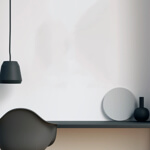22°59’13.187” S 43°13’13.355” W 05/07 17:27:24, 2018
Rio de Janeiro
Further images
TILL THE LIGHTS GO OUT
“Twilight, how gentle you are and how tender! The rosy lights that still linger on the horizon, like the last agony of the day under the conquering might of its night; the flaring candle flames that stain with dull red the last glories of the sunset; the heavy draperies that an invisible hand draws from the depths of the East, mimic all the complex feelings that war on one another in the heart of man in the solemn moments of life.”
—Charles Baudelaire¹
Every day, after sunset, the sky near the horizon acquires a plethora of tones between the blue of the day and the gradual absence of light until the darkness of night arrives. This twilight phenomenon, inspiring writers and artists across eras, provokes aesthetic experiences centered on the sensitive perception of colors and the contemplation of the natural spectacle of lights, which modify in the fugacity of the instant. It's necessary to be in the right place and at the right moment to contemplate the multiplicity of strokes in celestial pictorial layers that deconstruct before our eyes in a few minutes.
Throughout a year, artist Analize Nicolini photographed lights and colors between the sky and the sea during the twilight period at Leblon Beach. The process began by investigating luminous intensity through her window. An almost ritualistic routine was established for beach visits, ensuring homogeneous chromatic research without technical interference. Manual fine-tuning of the camera occurred only when the lens captured the same color intensity observed by her retinas. Once back home, confirmation that the digital image, when enlarged, passed through the color table established by the look of that fateful evening. Thus, she amassed over 4000 images recorded during a solar translation cycle, walking the path of repetition for the necessary determination of the experimental process.
In Claude Monet's "The Rouen Cathedral" series, he painted the same church in different lights at various times of the day, capturing the surprising transformation of its appearance. Monet introduced a new dimension of the momentary and sudden character into painting, akin to the characteristics of impressionist art and photography. Both share the portrayal of light through light itself. Impressionism aimed to synthesize modern art into a purely optical dimension. Art critic Meyer Schapiro argued that the reduction of impressionist interests to "purely visual" is a "cultural phenomenon and a choice" of the artists, akin to "action, religion, and myth."
Analize's poetic choice transcends the purely visual or formal aspect of portraying light. When she arrived in Rio de Janeiro three years ago, she realized that the beautiful landscapes were forged in the precariousness of the city, in the insurmountable abyss of social inequality. The beach, considered the most democratic public space, became the focus. Reproducing the lights around Dois Irmãos hill and Vidigal favela, she shared the same aesthetic experience of twilight with its residents, highlighting metaphorically significant contrasts in the colorful nuances of the everyday urban sky.
The beach, as the research location, a tourist attraction, and a city postcard, is another representative choice. Though paradoxical amidst the digital age, Analize shapes her poetic process in this shared place, reaffirming the need to bring art closer to the public. In this everyday landscape, the observer identifies the place as an immobile object, starting to experience the chromatic singularity of each moment, carefully captured by the artist. Here, the particularity of Analize pursues the creative luminosity of reflections and textures, transforming the circumstance almost into an abstraction.
Walter Benjamin's concern in "The Work of Art in the Age of Mechanical Reproduction" referred to photographic and graphic reproductions in the 1930s. Analize's work seems to rescue some remnant of aura by developing a detailed technical process in photographing itself. She despises, in a certain way, the camera's technological resources and chooses not to treat the images, tearing down technical barriers. Thus, she transforms photography into a mere means of materializing the experience of the gaze.
The poem quoted in the title of this text would be even more enchanting if the poet Charles Baudelaire had known Leblon Beach. It would translate into words the strength of our twilight with the mastery of he who identified 'the ephemeral pleasure of circumstance' in the early days of European modernity in the mid-19th century. In today's dark times, when the city exposes its wounds, Analize's invitation affectionately soothes the pains of the city. In the contemplation of this action, which is at the same time collective and profoundly particular, the visuality of the beautiful allows us to dream, in the fugacity of those few moments of lights and colors that tear the firmament, even knowing that everything will be quickly faded by night.
—Valesca Veiga
*Valesca Veiga is a journalist with a master’s degree in Social History of Culture, focusing on the History of Art and Architecture, from Pontifícia Universidade Católica do Rio de Janeiro – PUC-Rio.
¹ Baudelaire, Charles. Poems in Prose (Le spleen de Paris). Evening Twilight, s.d. Postmortem publication,1869. Translation by Arthur Symons. University of Toronto, 1913.
Publications
NICOLINI, Analize. Lights of Leblon.
1st Edition. Rio de Janeiro: R&P books, 2019.





